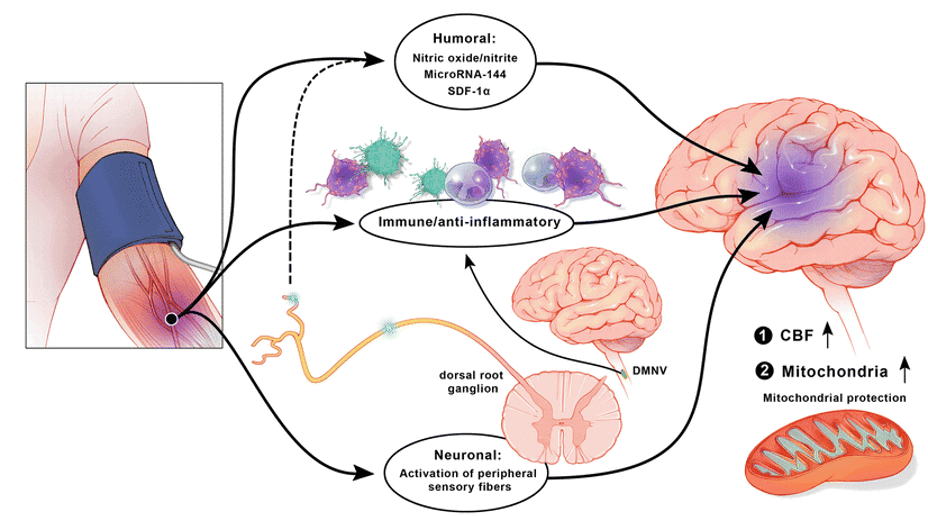

Remote Ischemic
Conditioning (RIC) Therapy
Learn more about RIC therapy.
Remote ischemic conditioning (RIC) is a therapeutic procedure that involves the transient and repetitive occlusion of blood flow to an upper arm limb, such as using an inflatable cuff, in order to induce ischemic episodes followed by reperfusion. A 5-min period of arm occlusion is followed by a 5-min period of reperfusion, repeated a total of four times.
The aim of RIC is to protect distant organs and tissues, such as the heart, brain, or kidneys, from ischemia-reperfusion injury—a form of tissue damage that occurs when blood supply returns to tissue after a period of ischemia or lack of oxygen.
The mechanism behind RIC is thought to involve both local and systemic responses. Locally, transient ischemia in the upper arm induces a cascade of cellular stress responses, such as the activation of protein kinases, upregulation of heat shock proteins, and production of protective cytokines. Systemically, these signals are transferred to remote organs and tissues through neural pathways, humoral factors in the bloodstream, and the release of endogenous protective agents such as adenosine, bradykinin, and nitric oxide. These agents help to precondition distant tissues, making them more resistant to subsequent ischemic injury.
RIC is well-studied with over 5,000 publications over the past 30 years. Over 30,000 patients worldwide have completed clinical trials using RIC for a variety of indications. The procedure is entirely noninvasive and has no known serious side effects, with less than 1 percent of the patients experiencing a transient skin redness, which resolves in a day or two.
Repeated applications of RIC is now being investigated for treating a variety of chronic conditions, such as chronic wounds, including diabetic foot ulcers.
